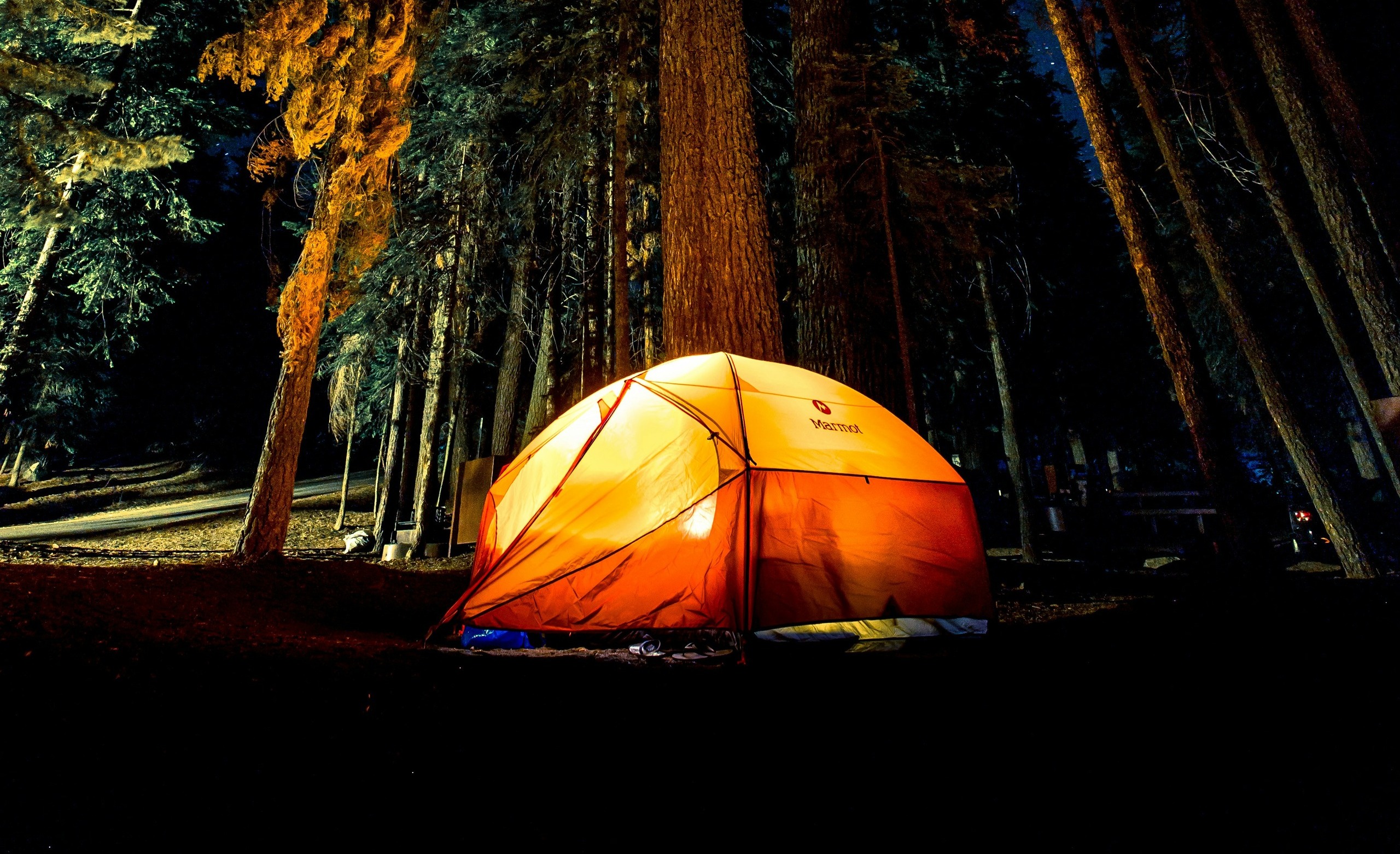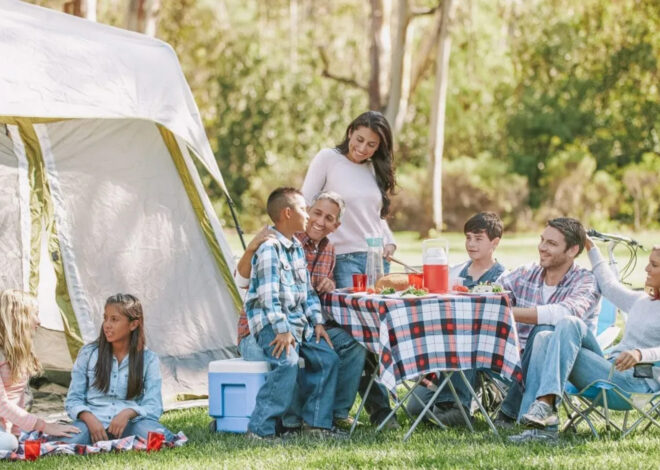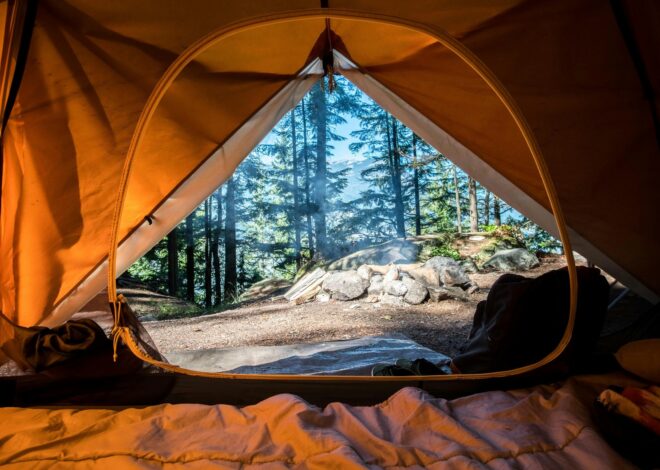
How To Pitch A Tent For Beginners
Welcome to our comprehensive guide on how to pitch a tent for beginners. Camping is one of the best ways to escape the hustle and bustle of everyday life. But before you can roast marshmallows or explore nature’s wonders, there’s an essential skill every camper needs: knowing how to pitch a tent. For beginners, this task might seem daunting.
However, with the right guidance and practice, you’ll soon find yourself setting up camp like a pro. Picture this: You arrive at your campsite after a long hike, eager to unwind but facing that momentary panic when it comes time to set up your shelter for the night. Don’t worry!
This guide will walk you through everything from choosing the right tent to troubleshooting common pitching problems. With just a few simple steps, you’ll be ready to enjoy all that nature has to offer in no time. Let’s dive into the world of camping and learn how easy it is to create your own cozy retreat under the stars!
The Importance of Knowing How to Pitch a Tent
Knowing how to pitch a tent is a fundamental skill for any camper. It sets the stage for your entire outdoor experience, affecting comfort and safety. A well-pitched tent provides shelter from unpredictable weather. Rain or wind can quickly turn an enjoyable trip into a disaster if you’re unprepared.
Proper setup means staying dry and cozy during those unexpected storms. Additionally, understanding this skill fosters independence in nature. You won’t need to rely on others when it’s time to set up camp. This confidence enhances your overall adventure, allowing you to focus more on exploring rather than worrying about logistics.
Pitching a tent becomes part of the camping ritual itself—a moment that signals relaxation and connection with nature. The simple act of setting up can create lasting memories as you prepare for nights under the stars with friends or family nearby.
Choosing the Right Tent for Your Needs
Selecting the right tent is crucial for a successful camping experience. Start by considering the number of people who will be sleeping in the tent. Tents come in various sizes, so ensure you have enough space to accommodate everyone comfortably. Next, think about your camping destination and weather conditions.
A lightweight backpacking tent may work well for summer hikes, while a sturdy three-season or four-season tent offers more durability against wind and rain. Don’t forget about ease of setup. Some models require more time and practice, which might not suit beginners looking for simplicity.
Consider special features such as extra storage pockets or built-in ventilation systems that enhance comfort during your stay under the stars. All these factors play a role in making sure your adventure is enjoyable from the moment you arrive at camp.
Essential Equipment for Tent-Pitching
When it comes to pitching a tent, having the right equipment can make all the difference. Start with a sturdy tent that suits your needs. Familiarize yourself with its components before you head out. Next, don’t forget about stakes and guylines.
These keep your tent secure against wind and provide stability in varying conditions. A mallet or hammer is essential for driving those stakes into the ground effectively. A footprint, which is an additional tarp placed under your tent, helps protect it from sharp objects and moisture.
This simple layer can extend the life of your shelter significantly. Consider bringing a reliable multi-tool or knife for any adjustments needed during setup. Your camping experience will be smoother when equipped with these essentials at hand.
Choosing the Perfect Campsite
Choosing the perfect campsite can make or break your outdoor experience. Look for a flat, dry area free from rocks and sharp objects. This ensures a comfortable sleeping surface. Proximity to water is crucial, but keep your distance from streams or lakes. They may flood during heavy rain.
Aim for at least 200 feet away to protect both yourself and the environment. Consider sunlight exposure too. A spot with morning sun will warm you up after chilly nights, while afternoon shade offers relief during warmer days. Don’t forget about windbreaks!
Trees or natural terrain can shield you from strong gusts, adding an extra layer of comfort to your setup. Take note of wildlife in the area as well. Camp away from animal trails to avoid unexpected encounters at night. Each choice contributes significantly to your camping adventure’s safety and enjoyment.
Step-by-Step Guide to Pitching a Tent
A. Clearing the Campsite
Before pitching your tent, take a moment to clear the campsite. It’s essential for comfort and safety. Start by removing any debris like branches, rocks, or sharp objects that could damage your gear or cause discomfort while sleeping.
Look out for uneven ground too. A flat surface is ideal as it provides stability and reduces the risk of rolling off during the night. If you can’t find one, try to level the area as much as possible.
Make sure there are no dead branches overhead. These can fall unexpectedly and pose a hazard at night when you’re settling in.
Check for wildlife signs such as animal tracks or droppings. You want to avoid setting up camp in their territory! Clear away any potential hazards so your camping experience remains enjoyable from start to finish.
B. Lay Out the Tent
Once you’ve cleared your campsite, it’s time to lay out the tent. Start by unfolding it carefully and spreading it across the ground where you plan to set up.
Pay attention to the orientation of the entrance; this will help you create a welcoming space. If you’re camping in an area prone to wind, position the door away from prevailing gusts for added comfort.
Make sure all parts are laid out—flysheet, inner tent, poles—and check that they’re free of dirt or debris. This step ensures everything is ready for assembly without any surprises later.
If your tent has a footprint or ground tarp, place that down first. It provides extra protection against moisture and sharp objects beneath your tent floor. Now everything is neatly arranged and you can move on to assembling those poles with confidence!
C. Assemble the Poles
Assembling the poles is a crucial step in pitching your tent. Most tents come with color-coded poles, which makes this process easier for beginners. Start by laying out the poles next to your tent body.
Carefully connect each pole section. They often have clips or sleeves that hold them together. Make sure you handle them gently to avoid any damage. It’s tempting to rush, but taking your time ensures everything fits properly.
Once connected, insert the ends of the poles into the corresponding grommets on the groundsheet or tent corners. This will give structure and stability to your setup as you move forward in pitching your tent.
Check that all joints are secure before moving on; a shaky structure can lead to problems later, especially if wind picks up during the night.
D. Stake Down the Corners
Once your tent is laid out, it’s time to stake down the corners. This step is crucial for keeping your shelter secure against wind and unexpected weather changes.
Start by locating the corner stakes provided with your tent. Position each stake at a 45-degree angle away from the tent’s base. This angle ensures better stability as it allows the tension of the fabric to hold them in place effectively.
Use a mallet or rock to drive each stake into the ground firmly. Aim for about two-thirds of each stake to be underground, giving you a solid anchor point. Be mindful not to overdrive; you want them snug but not bent.
After securing all four corners, check that your tent remains taut—this helps prevent water pooling during rain and enhances overall durability. Adjust as necessary until everything feels just right before moving on!
E. Attaching the Rainfly (if applicable)
Once your tent is securely staked down, it’s time to attach the rainfly if your model includes one. The rainfly serves as an additional layer of protection against moisture and elements.
Begin by locating the rainfly in your gear. Some tents have a specific orientation for their fly, so check for tags or markings that indicate which side goes where.
Drape the rainfly over the top of your tent, ensuring it covers all openings completely. Adjust its position so that you maintain equal coverage on both sides.
Next, secure it using any provided clips or hooks attached to your tent structure. If there are guylines included with your setup, stake them out to create tension—this keeps water from pooling on top during rainstorms.
With everything snugly in place, you’re prepared for whatever weather comes next!
F. Setting Up Inside the Tent
Once your tent is securely pitched, it’s time to make the inside cozy. Start by shaking out any debris that may have made its way in during the setup process. A clean space sets a pleasant tone.
Next, consider placing a sleeping pad or air mattress on the ground for comfort. This layer will insulate you from cold surfaces and provide support for a good night’s sleep.
Organize your gear efficiently. Keep essentials close at hand while stowing larger items toward the back of the tent. Use dry bags or storage sacks to keep everything tidy and protected from moisture.
Lighting can also enhance your experience inside the tent. Consider string lights or headlamps to create an inviting ambiance after sunset.
Don’t forget about ventilation! Opening vents or doors slightly can help prevent condensation build-up during those chilly nights under the stars.
Troubleshooting Common Tent-Pitching Issues
Pitching a tent can come with its fair share of hiccups. Understanding common issues helps you tackle them head-on. One frequent problem is uneven ground. If your tent isn’t sitting flat, it can lead to discomfort and rain pooling inside. Look for a level spot before staking down your corners.
Another issue might be missing parts. Always double-check that all poles, stakes, and guylines are included when packing your gear. A quick inventory saves frustration later. If you’re struggling with zippers that snag or don’t close properly, try applying some lubricant like beeswax or soap on the zipper track to ease movement.
Wind can also be tricky during setup. Ensure you’ve staked down securely by using extra guy lines if necessary, especially in gusty conditions. If condensation builds up inside the tent at night, consider using a breathable tent or opting for an additional rainfly to help manage moisture levels effectively.
Breaking Down and Packing Up the Tent
Once the camping trip comes to an end, it’s time to break down your tent. Start by removing any gear or belongings inside. Double-check for personal items before packing up. Next, carefully unstake each corner. Keep the stakes organized in a separate bag so you don’t lose them for your next adventure.
Gently take apart the poles, ensuring not to bend or damage them. Lay everything out neatly on the ground. When collapsing your tent, shake off dirt and debris first. Fold it according to its design—many tents come with specific folding instructions that help avoid wrinkles and make packing easier.
Place everything back into its storage bag without forcing it in. A little patience here will go a long way in extending the life of your equipment and making future setups hassle-free!
Cleaning Up the Campsite
Cleaning up the campsite is a vital part of your outdoor experience. After enjoying nature, it’s essential to leave no trace behind. This helps protect wildlife and keeps the environment pristine for future visitors. Start by gathering all trash, food wrappers, and any other waste you’ve generated.
Don’t forget to check under logs or in bushes where items might hide. Next, if you’ve prepared meals at your site, make sure to dispose of food scraps properly. Burying them isn’t advised; instead, pack them out or use designated disposal areas if available.
Take a moment to dismantle any structures you set up during your stay. This includes tents and campfires—make sure ashes are cold before scattering them away from water sources. Take care when moving about the area so as not to disturb local flora. A little effort goes a long way in preserving our beautiful outdoors for everyone’s enjoyment.
Cleaning and Maintaining Your Tent
Proper tent maintenance begins with cleaning after every trip. Start by shaking out any dirt and debris. A soft brush or cloth can help remove stubborn particles stuck in the fabric. For deeper cleans, use mild soap and water to wipe down both the inside and outside of your tent.
Always avoid harsh detergents that could damage waterproof coatings. Drying your tent is crucial. Hang it up in a shady area to prevent mold and mildew from forming. Make sure it’s completely dry before packing it away. Store your tent loosely in a cool, dry place rather than tightly packed in its stuff sack.
This helps maintain its shape and integrity over time. Regularly check for tears or damage to zippers and seams during setup or takedown, addressing issues quickly can prolong the life of your camping gear significantly.
Alternative Camping Options for Beginners
For beginners, camping doesn’t have to mean traditional tents. Consider glamping as a stylish alternative. This option combines the beauty of nature with the comforts of home, offering furnished tents and cozy beds. If you’re looking for something more communal, try cabin camping. Many campgrounds provide rustic cabins equipped with essential amenities.
It’s a great way to enjoy the outdoors without sacrificing comfort. Another fun choice is camper van rentals. They offer mobility and shelter in one package, allowing you to explore multiple locations while having your sleeping quarters on wheels. Yurts are also gaining popularity.
These unique structures provide spacious interiors and are often found in picturesque settings, perfect for those seeking an immersive experience without roughing it too much. Consider backyard camping if you’re not ready for the wilderness yet. Set up a tent at home; it’s an excellent way to practice pitching while enjoying familiar surroundings.
Conclusion: Enjoy Your Outdoor Adventure
Camping is an incredible way to connect with nature and escape the hustle of everyday life. Mastering the skill of pitching a tent opens up a world of outdoor possibilities. Once you know how to set up your shelter properly, you can focus on enjoying your surroundings.
Remember that selecting the right tent, preparing your campsite, and following step-by-step instructions will make all the difference in your camping experience. Embrace any challenges along the way as opportunities to learn and grow. Don’t forget about cleaning both your tent and campsite after you’re done—it’s crucial for preserving nature’s beauty.
Whether you’re hiking through national parks or simply lounging by a lake, each moment spent under the stars enriches your soul. So grab a friend or go solo, pack up your gear, and hit the trail! Your next adventure awaits just outside those zippered doors.



